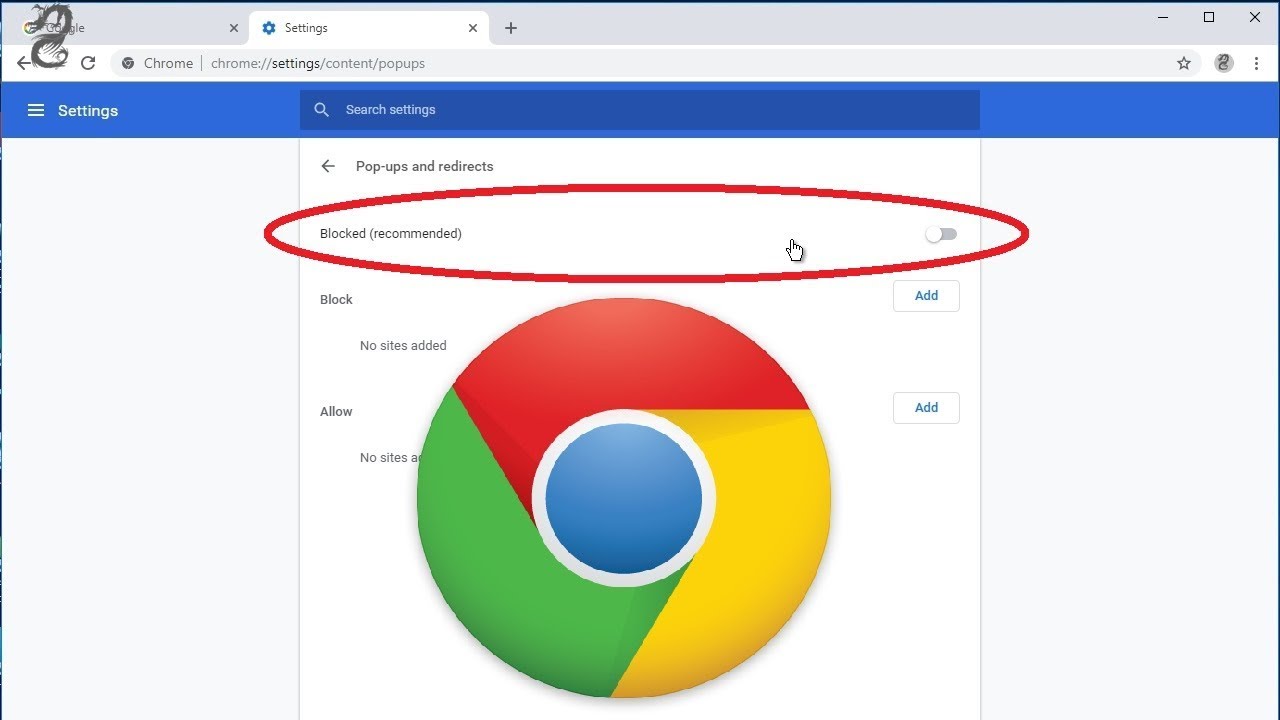Introduction
Welcome to the world of website optimization! If you are a webmaster or an SEO professional, you understand the importance of redirecting visitors to the most relevant pages of your website. One common scenario where redirects are used is when a user clicks on an outdated link that leads to a non-existent or moved page. In such cases, it is crucial to redirect them to a valid webpage to ensure a smooth user experience and maintain SEO rankings.
In this article, we will explore two popular methods for browser redirection: JavaScript redirect and HTTP redirect. Both methods have their advantages and considerations, and it is essential to understand their differences to make an informed decision on which one to use in a given situation.
We will delve into the technical aspects of each method, discuss the factors one should consider when choosing a redirect method, and provide guidance to help you make the best choice for your website. By the end of this article, you will have a solid understanding of the pros and cons of each method, enabling you to implement an effective redirect strategy for your website.
So, if you’re ready to dive into the world of browser redirection and boost your website’s performance, let’s get started!
Comparison of Redirect Methods
When it comes to redirecting users from one page to another, there are two primary methods to choose from: JavaScript redirect and HTTP redirect. Let’s compare these methods in terms of their functionality, implementation, and impact on SEO.
JavaScript Redirect: This method involves using JavaScript code embedded in the HTML header to redirect users to a different page. It offers a client-side redirect, meaning the redirection happens on the user’s browser. JavaScript redirects are commonly used when a page needs to load some content or perform calculations before directing to the final destination. This method provides more control over the redirection process and allows for dynamic redirects based on specific conditions or user actions.
HTTP Redirect: Unlike JavaScript redirect, HTTP redirect is a server-side redirect that occurs within the HTTP header response. It involves sending an HTTP status code to the user’s browser, indicating that the requested page has been moved permanently (301 redirect) or temporarily (302 redirect) to a different URL. This method is more straightforward to implement and is often used for simple, static redirects.
Both methods have their advantages and considerations. JavaScript redirect offers more flexibility and control over the redirection process, allowing for dynamic redirects and enhanced user experiences. Additionally, JavaScript redirects can be used to track user behavior and analytics. However, it requires the user’s browser to support JavaScript and may not be suitable for certain situations, such as redirecting users from old bookmarks or outdated links.
On the other hand, HTTP redirect is widely supported by all browsers and is search engine-friendly. It notifies search engines of the page’s new location, preserving SEO rankings and link equity. HTTP redirects are particularly useful when moving or restructuring a website or when redirecting users from deprecated URLs. However, it may not provide the same level of control and customization options as JavaScript redirect.
Overall, the choice of redirect method depends on the specific requirements of your website and the desired user experience. Consider factors such as website structure, user behavior, browser support, search engine considerations, and the level of control you need over the redirection process. By carefully evaluating these factors, you can select the most appropriate redirect method that aligns with your goals and ensures a seamless user experience.
Method 1: JavaScript Redirect
JavaScript redirects are implemented using JavaScript code that is inserted into the HTML file or within script tags. This method allows for client-side redirection, meaning the redirect happens on the user’s browser. Let’s explore the key aspects of JavaScript redirect and how it can be implemented.
Functionality: JavaScript redirect offers a range of functionalities and customization options. It can be used to redirect users to a different URL, modify the page’s content before redirection, or execute specific actions based on user interactions. JavaScript redirects can also be implemented conditionally, redirecting users based on their device type, browser version, or other factors.
Implementation: To implement a JavaScript redirect, you need to include the redirect code within the <head> section of your HTML file or within inline script tags. The code typically uses the “window.location” property to specify the target URL to which the user will be redirected. For example:
html
It is important to note that JavaScript redirects require the user’s browser to support JavaScript. If a user disables JavaScript in their browser or if the browser does not support JavaScript, the redirect will not occur. Therefore, it is advisable to provide alternative solutions for users who cannot be redirected through JavaScript.
SEO Considerations: JavaScript redirects may have implications for search engine optimization. Search engines have different levels of capability when it comes to executing JavaScript. While major search engines like Google and Bing are generally capable of understanding and processing JavaScript redirects, it is recommended to use server-side redirects for critical SEO-related redirects to ensure maximum visibility and indexing. Additionally, JavaScript redirects should be used appropriately and sparingly, as search engines may perceive excessive or improper use as manipulative behavior.
JavaScript redirects can be a powerful tool for creating dynamic and interactive redirection experiences on your website. By leveraging the flexibility and customization options offered by JavaScript, you can create user-friendly redirects that enhance the overall browsing experience. However, it is crucial to balance the functionality with SEO considerations and ensure that the redirects are properly implemented to achieve the desired outcomes.
Method 2: HTTP Redirect
HTTP redirect is a server-side method of redirecting users from one URL to another. It involves sending an appropriate HTTP status code to the user’s browser to inform it about the redirection. Let’s delve into the details of HTTP redirect and how it can be implemented.
Functionality: HTTP redirect allows for simple and straightforward redirection without any additional functionality. It is typically used when a page has permanently moved (301 redirect) or temporarily moved (302 redirect) to a different URL. HTTP redirect can be used to redirect users from outdated or deprecated URLs to their updated counterparts, ensuring a seamless browsing experience.
Implementation: Implementing an HTTP redirect involves configuring the appropriate HTTP status code in the server response. For example, to set up a 301 redirect, you need to configure the web server to send an HTTP 301 status code along with the new URL. This informs the user’s browser and search engines that the page has permanently moved to a new location. The browser then automatically requests and displays the new URL instead of the original one. Similarly, a 302 redirect is used for temporary redirects.
SEO Considerations: One of the key benefits of HTTP redirect is its search engine-friendliness. Search engines understand and respect HTTP status codes and follow the redirection accordingly. HTTP 301 redirects are particularly useful for SEO, as they communicate to search engines that the page has permanently moved and should transfer its ranking signals to the new URL. This helps in preserving SEO rankings, link equity, and ensuring that search engines appropriately index the new URL.
It is important to note that improper implementation of HTTP redirects can have negative SEO consequences. For instance, redirect chains or loops can cause issues for both users and search engines, resulting in poor user experience and potential loss of SEO rankings. Therefore, it is recommended to review and test the redirection setup thoroughly to avoid any unintended consequences.
HTTP redirect is a reliable and widely supported method for redirecting users to new URLs. With its search engine-friendliness and simplicity in implementation, it is often the preferred choice for redirecting users from deprecated URLs or when restructuring a website. By correctly implementing HTTP redirects, you can ensure a smooth user experience and maintain your website’s SEO rankings.
Factors to Consider when Choosing a Redirect Method
When it comes to choosing a redirect method for your website, there are several factors to consider. Each method offers its own advantages and considerations, and understanding these factors will help you make an informed decision. Let’s explore some key considerations when choosing a redirect method.
Website Structure: Evaluate your website’s structure and determine if there are specific redirection needs based on the organization of pages and URLs. Consider if you require conditional redirects, such as redirecting users from specific pages or sections to different destinations based on specific criteria.
User Experience: Consider the desired user experience for your redirects. JavaScript redirects allow for more customization and dynamic redirection experiences, enabling you to enhance usability and engagement. On the other hand, HTTP redirects are generally simpler and ensure a consistent redirection experience for all users.
Browser Support: Consider the compatibility of the redirect method with various browsers. JavaScript redirects may not work if users have JavaScript disabled in their browsers or if the browser does not support JavaScript. HTTP redirects, on the other hand, are universally supported by all browsers.
SEO Impact: Think about the SEO implications of your chosen redirect method. HTTP redirects, especially 301 redirects, are highly recommended for preserving SEO rankings and link equity. Search engines understand and follow HTTP status codes, ensuring that the page authority is transferred to the new URL. However, JavaScript redirects should be used judiciously, as excessive use or improper implementation may be perceived as manipulative by search engines.
Control and Flexibility: Consider the level of control and customization you require for your redirects. JavaScript redirects offer more flexibility, allowing for dynamic and conditional redirects based on user actions or specific criteria. On the other hand, HTTP redirects are simpler and provide a standardized redirection experience.
Implementation Complexity: Assess the complexity involved in implementing each redirect method. JavaScript redirects require embedding code within the HTML or inline script tags, while HTTP redirects can be configured through server-side settings. Consider your technical expertise and the ease of implementing and managing each method.
By carefully considering these factors, you can identify the redirect method that aligns best with your website’s needs and goals. Ultimately, the ideal method will provide a seamless user experience, preserve SEO rankings, and meet the technical requirements of your website.
Conclusion
Choosing the appropriate redirect method is crucial for maintaining a smooth user experience and preserving SEO rankings. Both JavaScript redirect and HTTP redirect offer distinct advantages and considerations.
If you require a flexible and dynamic redirection experience, JavaScript redirect is an excellent choice. It allows for customization based on user actions, conditions, and other factors. However, you should carefully consider the SEO implications and ensure proper implementation to avoid any negative impact on search engine visibility.
On the other hand, if simplicity and search engine-friendliness are important factors, HTTP redirect is a reliable option. It ensures that search engines recognize the redirection and transfer SEO rankings to the new URL. HTTP redirect is widely supported by all browsers and is an excellent choice for redirecting users from deprecated URLs or when restructuring a website.
When making your decision, consider factors such as website structure, desired user experience, browser support, SEO impact, control and flexibility, and implementation complexity. By carefully evaluating these factors, you can select the most appropriate redirect method that aligns with your website’s goals and requirements.
Remember, implementing redirects should be done with caution and proper testing to ensure a seamless browsing experience and minimal impact on SEO. Regular monitoring and evaluation of redirection performance will help you identify any issues or opportunities for improvement.
Now that you have a comprehensive understanding of JavaScript redirect and HTTP redirect, you can confidently implement the most suitable redirect method for your website. Choose wisely, and enjoy the benefits of effective browser redirection!

























